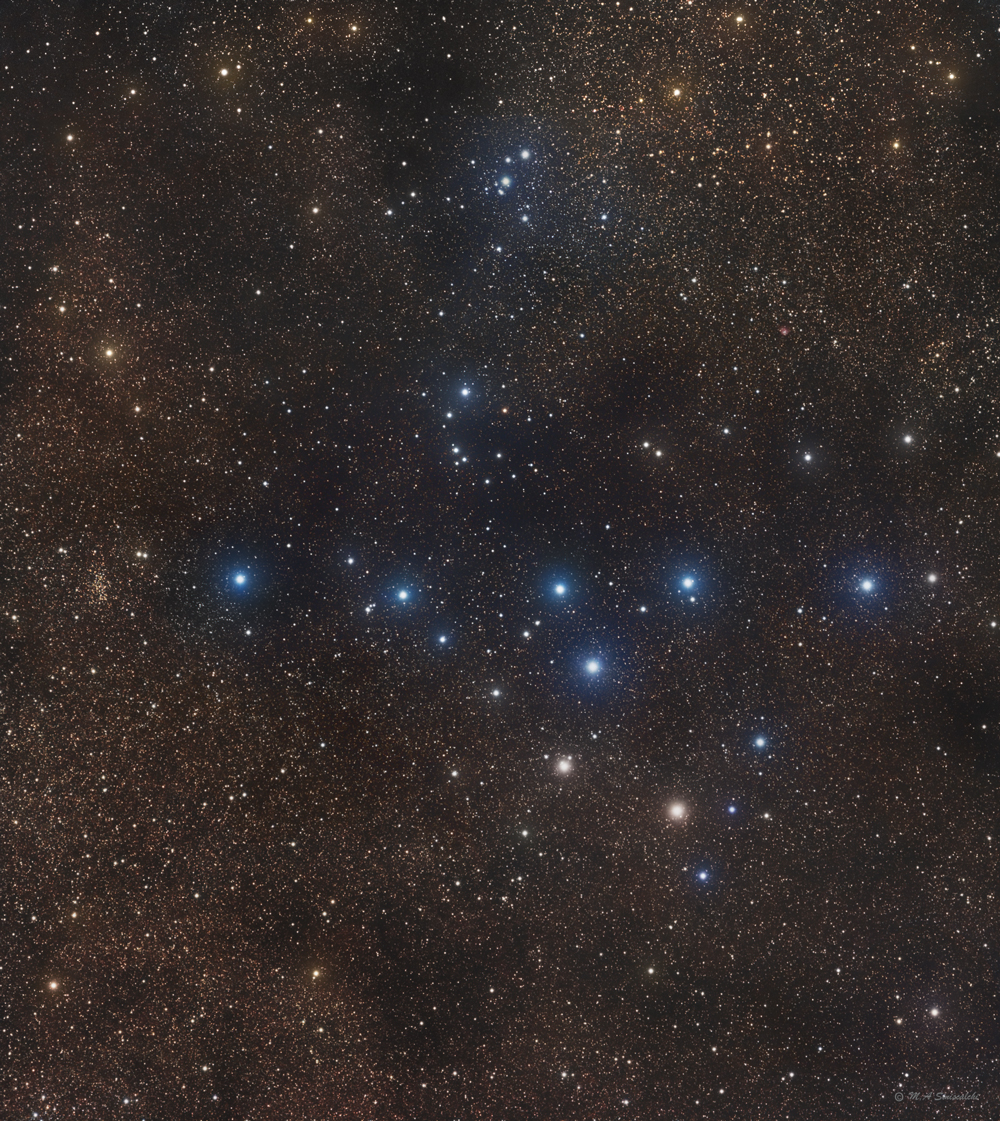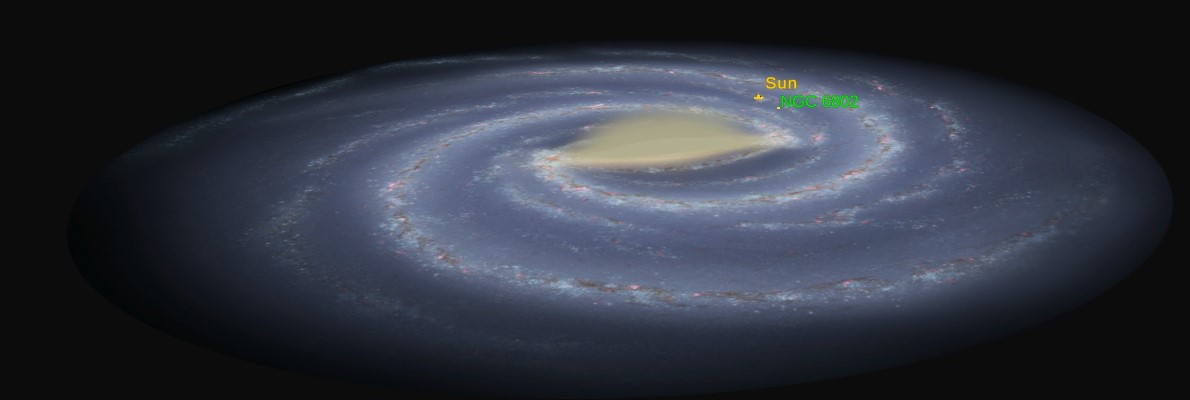© 2022 Michael A. Siniscalchi
Collinder 399 & NGC 6802
Star Clusters in Vulpecula
RA:19h 24m 53s Dec: +21 03' 07" Distance - ~5,799 ly Size ~60'
Wikipedia-
Collinder 399, Cr 399 also known as Al Sufi's Cluster or Brocchi's Cluster, is a random grouping of stars located in the constellation Vulpecula near the border with Sagitta. The members of the star cluster form an asterism which has given rise to its name as the Coathanger.
It was first described by the Persian astronomer Al Sufi in his Book of Fixed Stars in 964.
In the 17th century, it was independently rediscovered by the Italian astronomer G. B. Hodierna.
In the 1920s, Dalmero Francis Brocchi, an amateur astronomer and chart maker for the American Association of Variable Star Observers (AAVSO), created a map of this object for use in calibrating photometers. In 1931, Swedish astronomer Per Collinder listed it in his catalogue of open clusters.
The status of this group as a star cluster has changed in recent years. The group was considered to be a cluster for most of the 20th century. Looking at a variety of criteria, however, a study in 1970 concluded that only 6 of the brightest stars formed an actual cluster. Several independent studies since 1998 have now determined that this object is not a true cluster at all, but rather just a chance alignment of stars. These recent studies have generally based their findings on improved measurements of parallax and proper motion provided by the Hipparcos satellite which were first published in 1997.
The asterism is made up of 10 stars ranging from 5th to 7th magnitude which form the conspicuous "coathanger", a straight line of 6 stars with a "hook" of 4 stars on the south side. An additional 30 or so fainter stars are sometimes considered to be associated as well.
Left of CR399 is NGC6802 an Open Galactic Cluster also in the constellation of Vulpecula.
Above CR399 towards the right you can see SH2-83, a small emission nebula.
Click image for the full size version
Click here for the annotated version
This is the initial stretch of the uncropped 6-panel Luminance channel using 30 minutes of exposures for each panel.
NGC6802 position shown relative to our location (Sun) in the Milky Way Galaxy
Galatic Longitude: 55.3
Galatic Latitude: 0.9
Distance from Galatic Plane:148 ly above the galatic plane
Above image and info provided by Our Galaxy 3D Atlas application and used with permission by
Otherwise


